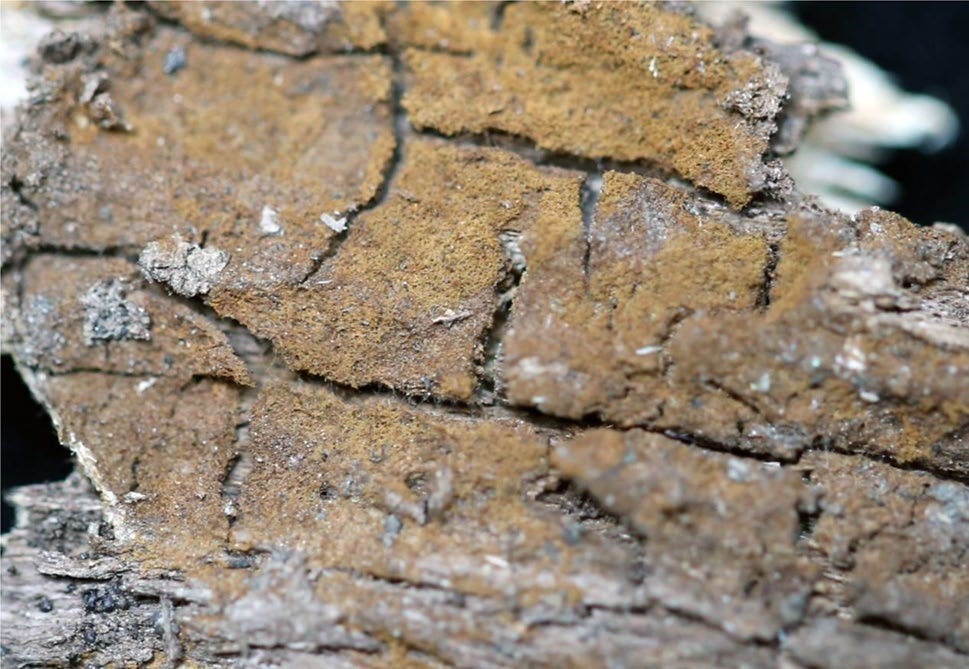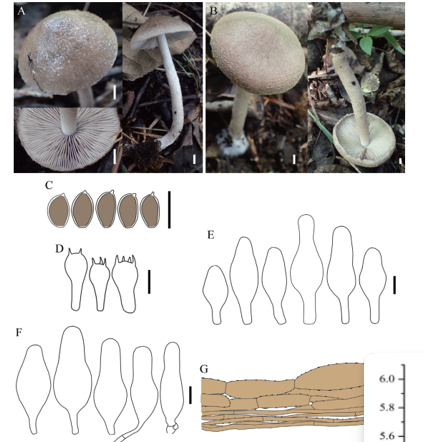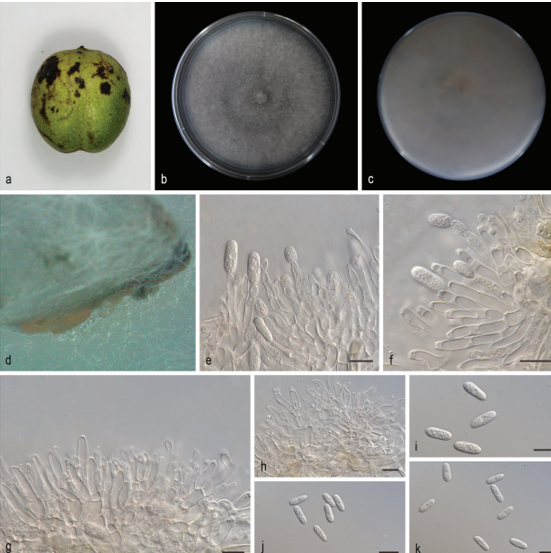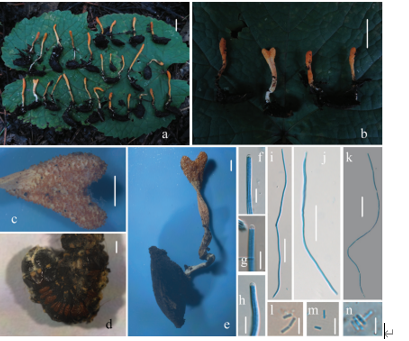Tomentella liaoningensis H.S. Yuan & Y.C. Dai 2020
Index Fungorum number: IF555703; Facesoffungi number: FoF 05632
Holotype: CHINA, Liaoning Province, Huanren County, Laotudingzi Nature Reserve, on rotten angiosperm branch, 21 October 2015, Yuan 10707 (IFP 019301, holotype); on rotten angiosperm wood debris, 21 October 2015, Yuan 10681 (IFP 019302); on fallen angiosperm branch, 4 August 2018, Yuan 12982.
Morphological description
Basidiocarps annual, resupinate, adherent to the substrate, mucedinoid, without odour or taste when fresh, 0.2–0.4 mm thick, continuous. Hymenophoral surface smooth, brown (6D7–6E8) and concolorous with subiculum when dry. Sterile margin often indeterminate, farinaceous, concolorous with hymenophore. Rhizomorphs absent. Subicular hyphae monomitic; generative hyphae clamped and simple septate, thick-walled, occasionally branched, 3–5 μm diam, occasionally collapsed, without encrustation, pale orange in KOH, cyanophilous, inamyloid. Subhymenial hyphae clamped, thin-walled, occasionally branched, 3–5 μm diam; hyphal cells more or less uniform, pale orange in KOH, acyanophilous, inamyloid. Cystidia absent. Basidia 20–50 μm long and 5–9 μm diam at apex, 3–5 μm at base, with a clamp connection at base, utriform, stalked, sinuous, without transverse septa, pale orange in KOH, yellowish brown in distilled water, 4-sterigmate; sterigmata 2–5 μm long and 0.5–1 μm diam at base. Basidiospores thickwalled, (6–)6.3–7.8(–8.5) × (5.5–)6.1–7.5(–8) μm, L = 7.07 μm, W = 6.89 μm, Q = 1.02–1.08 (n = 60/2), irregularly globose or lobed in frontal and lateral views, aculeate, orange in KOH, golden yellow in distilled water, cyanophilous, inamyloid; echinuli usually isolated, sometimes grouped in 2 or more, up to 1.5 μm long.
Habitat: On rotten angiosperm branch.
Distribution: In China.
GenBank Accession: ITS: KY686257, MK250814.
Notes: Tomentella stuposa resembles T. liaoningensis by having brown, mucedinoid, continuous basidiocarps adherent to the substrate, a smooth hymenophore, the absence of rhizomorphs, subicular hyphae mostly clamped and rarely simple septate, thin-walled subhymenial hyphae, and echinulate basidiospores. However, T. stuposa differs by slightly globose and bigger basidiospores (8.5–11 μm, Kõljalg 1996). T. clavigera is similar to T. liaoningensis by having brown, mucedinoid, continuous basidiocarps adherent to the substrate, a smooth hymenophore, indeterminate and byssoid sterile margins, the absence of rhizomorphs, and irregularly globose or lobed basidiospores. But, the former species is differentiated by clavate cystidia, the absence of simple septa on generative hyphae, and bigger basidiospores (7.5–8.5 μm, Kõljalg 1996).
Reference: Hai‑Sheng Yuan1,2· Xu Lu1,2 · Yu‑Cheng Dai3 ·

A basidiocarp of Tomentella liaoningensis (IFP 019301, holotype)









